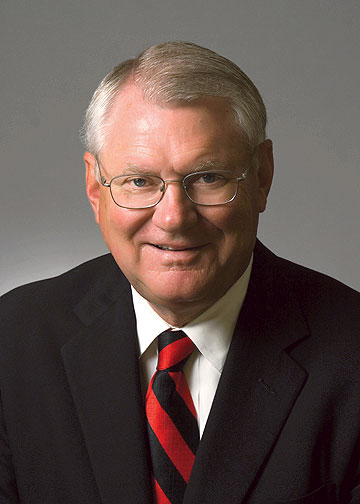With President David Schmidly’s late-April declaration that he will be stepping down next year, the time has come to contemplate what kind of pay might be appropriate for future UNM administrators. When the Board of Regents voted to approve Schmidly’s employment contract in February 2007, Regent Mel Eaves offered a common refrain in explaining the nearly $600,000 yearly compensation package: “To be competitive in the marketplace, you have to pay accordingly.”Remarkably, such explanations of Schmidly’s contract are never accompanied by data about what other universities are offering their presidents. If we were to compare the presidential pay at public universities, what might we expect a UNM president to make? Strangely, the question is never posed by the regents. First, we should establish a set of criteria. Some universities have higher academic rankings than others. It’s fair to expect that, all else being equal, a president charged with maintaining top-notch research programs would fetch more in the marketplace than a president who oversees a mid-ranked research institution (such as UNM). Universities also vary in their athletic programs’ ability to attract external revenue from ticket and product sales, booster contributions, and broadcast rights and royalties. Since states value successful collegiate athletic programs, a college president charged with maintaining high levels of athletic revenue would perhaps be paid better. New Mexico is also a relatively poor state with a lower cost of living than other states. That factor might shave a little off the top of the competitive compensation package. An analysis of public universities suggests UNM’s regents haven’t done a good job of weighing their salary offers against the market. Relative to UNM, there are many public universities with higher academic rankings and more successful athletic programs that pay their presidents markedly less. By some measures, UC Berkeley is the highest-ranked public university in the United States. Its athletics program also brings in considerably more revenue than UNM’s. It’s located in a metropolitan area with a much higher cost of living than Albuquerque. And yet, the Chronicle of Higher Education reports that in 2008-2009, UC Berkeley’s president was paid $127,044 less in total compensation than UNM’s president. In the case of UCLA, which is also one of the most highly ranked public universities in the country, its president was paid almost $170,000 less than Schmidly (in spite of the fact that UCLA’s athletic program brings in almost twice the revenue that UNM’s does). Other public universities have better academic rankings and more revenue-generating athletic programs but pay less in total compensation to their presidents. They are: the University of Wisconsin, the University of Illinois, the University of Colorado, the University of Maryland, Rutgers, the University of Florida, the University of Arizona, the University of North Carolina, Indiana University, Texas A & M, North Carolina State, Iowa State, the University of Tennessee and the University of Nebraska.It is also worth noting that all of those schools are in richer states than New Mexico. Simply put, there is nothing about the marketplace to indicate that UNM needs to pay its president $594,600 in total compensation per year. Rather, the evidence suggests that UNM is paying a hefty sum for Schmidly. Perhaps more alarmingly, there is reason to believe that the employment contracts of top UNM administrators are designed to conceal the total amount they receive. In comparison to other presidential employment contracts, Schmidly’s is somewhat unusual in the extent to which his compensation package exceeds his base salary. Because more than $200,000 of President Schmidly’s yearly compensation comes in the form of perks, the base salary figure that the president reports in UNM’s salary book is misleading. Part of the problem is that UNM needs more oversight and transparency. In 2009, the Albuquerque Journal had to file a public records request to find out how many top UNM administrators received deferred compensation (which the administration does not report in UNM’s salary book). If UNM is serious about transparency and keeping costs under control, why should anyone have to file public records requests to find out how much top administrators are paid? One positive sign is that Regent Don Chalmers has called for putting executive salaries on the table. Hopefully the other regents will take Chalmers seriously. Instead of talking about cutting the wages of relatively low-paid staff, the university ought to consider cutting the compensation packages of vice presidents, associate vice presidents and other top administrators who can bear the costs of the cuts. In the meantime, the regents should call for total compensation reports in the salary book. Folks in the community ought to have the information they need to be able to make up their own minds.
Justin Delacour is a Ph.D. candidate of political science at the University of New Mexico. Email justin.delacour@yahoo.com.





